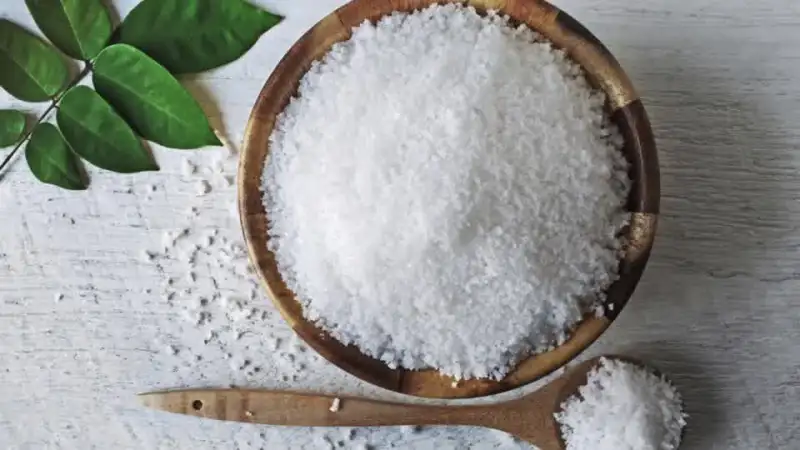Toenail fungus can be a troublesome condition to deal with, turning healthy nails into thick, discolored versions of their former selves.
Learn more about toenail fungus, what causes it, and how you can rid yourself of fungal infections without breaking the bank.
Causes and Risk Factors of Toenail Fungus
The causes behind toenail fungal infections are multifaceted. Dermatophytes, the main culprits behind toenail fungus, thrive in warm and moist environments, like the inside of a shoe.
Several risk factors increase the likelihood of developing toenail fungus. Age plays a vital role since our nails become drier and more brittle with time, making them susceptible targets for fungi invasion.
A weak immune system also contributes significantly to susceptibility to these pesky pathogens. People suffering from conditions like diabetes or circulatory problems have been observed to be at higher risk, too.
Fungal Nail Infection: More Than Just An Aesthetic Problem
A fungal nail infection might seem like an aesthetic issue, but its implications go deeper than causing embarrassment during beach trips.
Neglecting treatment could let the dermatophyte settle comfortably under your nails, leading to discoloration and pain when pressure is applied on affected toes.
Beware Of Shared Spaces
Public spaces such as gyms or swimming pools are prime breeding grounds for various kinds of fungi, including those responsible for giving you thickened yellow nails. If you visit these kinds of places frequently, be sure to wear shoes that offer protection.
So, the next time you notice your toenail turning yellow or becoming brittle, don’t dismiss it as an aesthetic problem. It might be toenail fungus; early treatment can help prevent more severe complications.
Prevention Is Better Than Cure
A few simple steps can lower your risk of contracting this condition. Keeping your feet clean is key and giving them a good wash daily is also crucial for preventing fungus.
Remember to dry your feet thoroughly after washing to prevent fungus from festering.
Conventional Treatments for Toenail Fungus
Facing toenail fungus can be daunting, but you don’t have to go alone; medical treatments are available. Medical treatments are available and commonly used in the fight against this pesky infection.
Limitations of Conventional Treatments
One common medication is Lamisil. This antifungal agent aims to eradicate the fungi responsible for causing your nail woes. But before you jump on board with Lamisil or similar drugs, there are some facts you need to know.
Lamisil has a success rate of only 30-40%. That means up to 70% of users might not get the relief they’re hoping for from their toenail fungus treatment regimen. Additionally, these medicines may have adverse effects that could outbalance their advantages.
Potential side effects include liver damage, which could lead to serious health complications if not monitored closely by a healthcare professional during treatment.
Some patients even develop lupus or central nervous system damage due to these medications – two conditions much more severe than an unsightly toe.
To make matters worse, many people who do find initial success with such treatments report a recurrence of the infection later. These conventional methods just can’t cut it when discussing long-term results.
The Search For A Better Solution
In light of this information, it’s clear that while traditional medicines play an essential role in treating toenail fungus, they should perhaps not be seen as ‘the’ solution but rather as part of our toolkit against this stubborn condition.
We must continue exploring all avenues, including dietary changes and natural remedies.

Dietary Influence on Toenail Fungus
When it comes to toenail fungus, our diet plays a surprisingly significant role. Specifically, the amount of carbohydrates we consume can affect the growth and recurrence of this pesky problem.
To understand why, let’s consider what fungi need to thrive: warmth, moisture, and food. Our body naturally provides the first two conditions, but the third one is where our dietary decisions come into play.
Fungi feed off glucose, a simple sugar that results from carbohydrate digestion.
So, if you’re constantly filling up on bread, pasta, or sugary snacks, fungi could easily begin to take hold under your toenails.
Poor Blood Circulation And Skin Conditions:
But there’s more than just toe health at stake here. Poor circulation often goes hand-in-hand with high blood sugar levels due to its damaging effect on blood vessels over time, another reason those prone to foot problems like nail fungus or skin conditions should watch their carb intake.
High sugar levels can also lead to skin conditions that create an even more inviting environment for fungi. Managing your diet could be a key strategy in the battle against toenail fungus.
Home Remedies for Toenail Fungus
When addressing toenail fungus, some people turn to home remedies for relief. One intriguing option is the use of ozonated olive oil. This unique formulation involves infusing ozone into olive oil, creating a compound believed to possess antifungal properties.
While research is ongoing, some individuals apply ozonated olive oil topically to affected toenails to combat the stubborn fungus.
However, it’s essential to consult with a healthcare professional for a comprehensive approach to treating toenail fungus, as individual responses to such remedies can vary, and more established treatments are available.

The Power of Epsom Salts
Epsom salts, or magnesium sulfate, have long been used in foot soaks. They not only soothe tired feet but also play an essential role in fighting off pesky nail infections.
Soaking your feet in warm water mixed with Epsom salts for 15 minutes daily could show significant improvements over time.
The salt in the mixture helps to extract harmful toxins and soften the skin, permitting antifungal agents to enter more deeply into any affected areas. Ensure you dry your feet thoroughly after each soak; remember that fungi love damp environments.
Tea Tree Oil: A Natural Antifungal Compound
Tea tree oil is derived from Melaleuca alternifolia leaves and has potent antifungal properties that inhibit fungal mycelium.
You don’t need much either, dabbing some diluted tea tree oil onto affected nails twice daily can help restore them to health.
Iodine: An Inexpensive and Effective Solution
Iodine is known mainly as a wound disinfectant, but it can also be an inexpensive remedy for toenail fungus.
Apply it to the affected nails once a day, and watch as your toes begin to heal.
As with all treatments, patience is vital. It might take several weeks or months to see improvements. Remember that consistency is king when using these home remedies.
Conclusion
Toenail fungus can be a bothersome condition that affects both the physical appearance of nails and overall foot health.
Understanding its causes and risk factors is crucial, along with preventive measures such as maintaining foot hygiene and avoiding shared spaces where fungi thrive.
While conventional treatments like Lamisil exist, they may have limitations and potential side effects, prompting the exploration of alternative solutions like dietary changes and natural remedies such as ozonated olive oil, Epsom salts, tea tree oil, and iodine.
Consulting with a healthcare professional for personalized treatment plans is essential, as individual responses to treatments may vary.
Supporting Data
https://pubmed.ncbi.nlm.nih.gov/9055360
https://pubmed.ncbi.nlm.nih.gov/12161399
https://pubmed.ncbi.nlm.nih.gov/17576222
https://www.ncbi.nlm.nih.gov/pmc/articles/PMC1569938
https://www.ncbi.nlm.nih.gov/pmc/articles/PMC4599634















